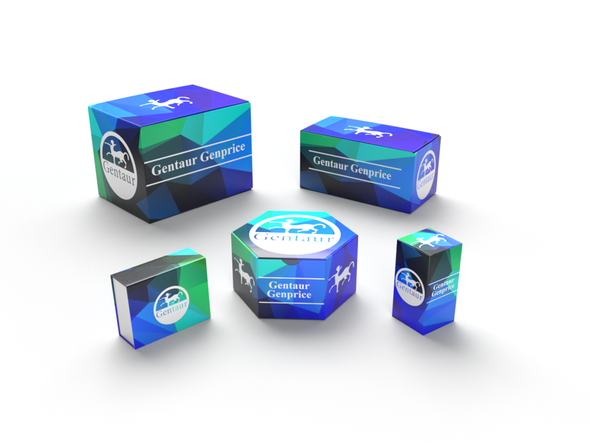Description
PHAP I Antibody | 3145 | Gentaur UK, US & Europe Distribution
Host: Rabbit
Reactivity: Human, Mouse, Rat
Homology: N/A
Immunogen: Anti-PHAP I antibody (3145) was raised against a peptide corresponding to 15 amino acids near the carboxy terminus of human PHAP I.
The immunogen is located within the last 50 amino acids of PHAP I.
Research Area: Apoptosis
Tested Application: E, WB, ICC, IF
Application: WB: 2-4 μg/mL; ICC: 2 μg/mL; IF: 10 μg/mL.
Antibody validated: Western Blot in human, mouse and rat samples; Immunocytochemistry in human samples; Immunofluorescence in human samples. All other applications and species not yet tested.
Specificiy: This polyclonal antibody has no cross-reaction to PHAP I2a and PHAP III.
Positive Control 1: Cat. No. 1207 - Raji Cell Lysate
Positive Control 2: Cat. No. 17-007 - Raji Cell Slide
Positive Control 3: N/A
Positive Control 4: N/A
Positive Control 5: N/A
Positive Control 6: N/A
Molecular Weight: Predicted: 29kD
Observed: 29 kD
Validation:
Independent Antibody Validation in Cell lines (Figure 2) shows similar PHAP I expression profile in human, mouse and rat cell lines detected by two independent anti-PHAP I antibodies that recognize different epitopes, 3145 against C-terminus domain and 3151 against C-terminus different domain. PHAP I proteins are detected in the most tested cell lines at different expression levels by the two independent antibodies.
KD validation (Figure 6) : Anti-PHAP I antibody (3151) specificity was further verified by PHAP I specific knockdown. PHAP I signal in T47D cells transfected with PHAP I siRNAs was disrupted in comparison with that in cells transfected with control siRNAs.
Regulated expression validation (Figure 7, 8, 9) : PHAP I expression detected by anit-PHAP I antibodies (3151) was up-regulated in breast cancer tissues of patients (Figure 7) and the breast cancer cell line (Figure 8) as well as in the Atxn1 KO mice (Figure 9) .
Isoform: Human PHAP I has one isoform (249aa, 28.6kD) . Mouse PHAP I has one isoform (247aa, 28.5kD) and rat PHAP I also has one isoform (247aa, 28.6kD) . 3151 can detect all isoforms of human, mouse and rat.
Purification: PHAP I Antibody is affinity chromatography purified via peptide column.
Clonality: Polyclonal
Clone: N/A
Isotype: IgG
Conjugate: Unconjugated
Physical State: Liquid
Buffer: PHAP I Antibody is supplied in PBS containing 0.02% sodium azide.
Concentration: 1 mg/mL
Storage Condition: PHAP I antibody can be stored at 4˚C for three months and -20˚C, stable for up to one year. As with all antibodies care should be taken to avoid repeated freeze thaw cycles. Antibodies should not be exposed to prolonged high temperatures.
Alternate Name: PHAP I Antibody: LANP, MAPM, PP32, HPPCn, PHAP1, PHAPI, I1PP2A, C15orf1, LANP, Acidic leucine-rich nuclear phosphoprotein 32 family member A, Acidic nuclear phosphoprotein pp32
User Note: Optimal dilutions for each application to be determined by the researcher.
BACKGROUND: PHAP I Antibody: Apoptosis is related to many diseases and development. Caspase-9 plays a central role in cell death induced by a variety of apoptosis activators. Cytochrome c, after released from mitochondria, binds to Apaf-1, which forms an apoptosome that in turn binds to and activate procaspase-9. Activated caspase-9 cleaves and activates the effector caspases (caspase-3, -6 and -7) , which are responsible for the proteolytic cleavage of many key proteins in apoptosis. The tumor suppressor putative HLA-DR-associated proteins (PHAPs) were recently identified as important regulators of mitochondrion apoptosis. PHAP appears to facilitate apoptosome-medicated caspase-9 activation and to stimulate the mitochondrial apoptotic pathway. PHAP was also shown to oppose both Ras- and Myc-medicated cell transformation.






